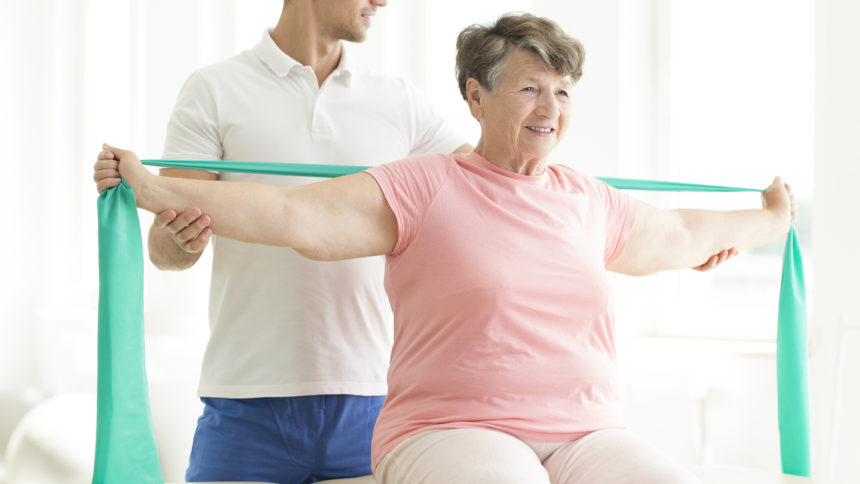
Eight weeks of participation in a structured resistance, aerobic and flexibility exercise program improved clinically relevant indicators of falls risk in previously sedentary older adults. It also led participants to begin new exercise habits that they sustained one year later, according to a study published in the Journal of Sports Sciences.
Researchers at the University of Missouri, Columbia, conducted a randomized controlled trial of 60 participants aged 60 or more years. The participants were sedentary (no strength training and less than 30 minutes per week of other structured exercise), independently ambulatory and free from physical injury or illness preventing exercise.
The participants were randomly assigned to one of three groups: a control group that maintained a sedentary lifestyle, a walking group that met twice weekly for 60 minutes each time, and a group that participated in Stay Strong, Stay Healthy (SSSH), a progressive resistance training program, twice weekly for eight weeks, with each session lasting for 60 minutes.
SSSH participants demonstrated greater absolute changes over eight weeks in sleep quality, activity engagement, 30-second-sit-to-stand and upper-body flexibility than did members of the waking or control groups. Twelve months later, SSSH participants reported significantly increasing their independent resistance (+68 minutes), aerobic (+125) and flexibility (+26) training minutes per week.
In addition, 11, 11 and 9 participants in the SSSH, walking and control groups, respectively, fell below national age-specific norms at baseline for the 30-second-sit-to-stand test, suggesting an increased risk of falls. After the eight-week intervention, however, 72% of SSSH participants migrated from the at-risk category to normal, compared with 27% and 33%, respectively, in the walk and control groups.
SSSH participation also prompted older adults to increase their engagement in structured resistance, aerobic and flexibility training that lasted up to one year after their initial SSSH classes had ended, allowing many older adults to meet activity guidelines independently during the COVID-19 pandemic, the authors said.
The clinical significance of these positive behavior modifications cannot be overstated, the researchers wrote. “The cyclical relationship between exercise engagement, functional capacity, self-efficacy, and fall risk has been well established and data from this study suggests that SSSH participation improves both exercise engagement and functional capacity,” they said.





